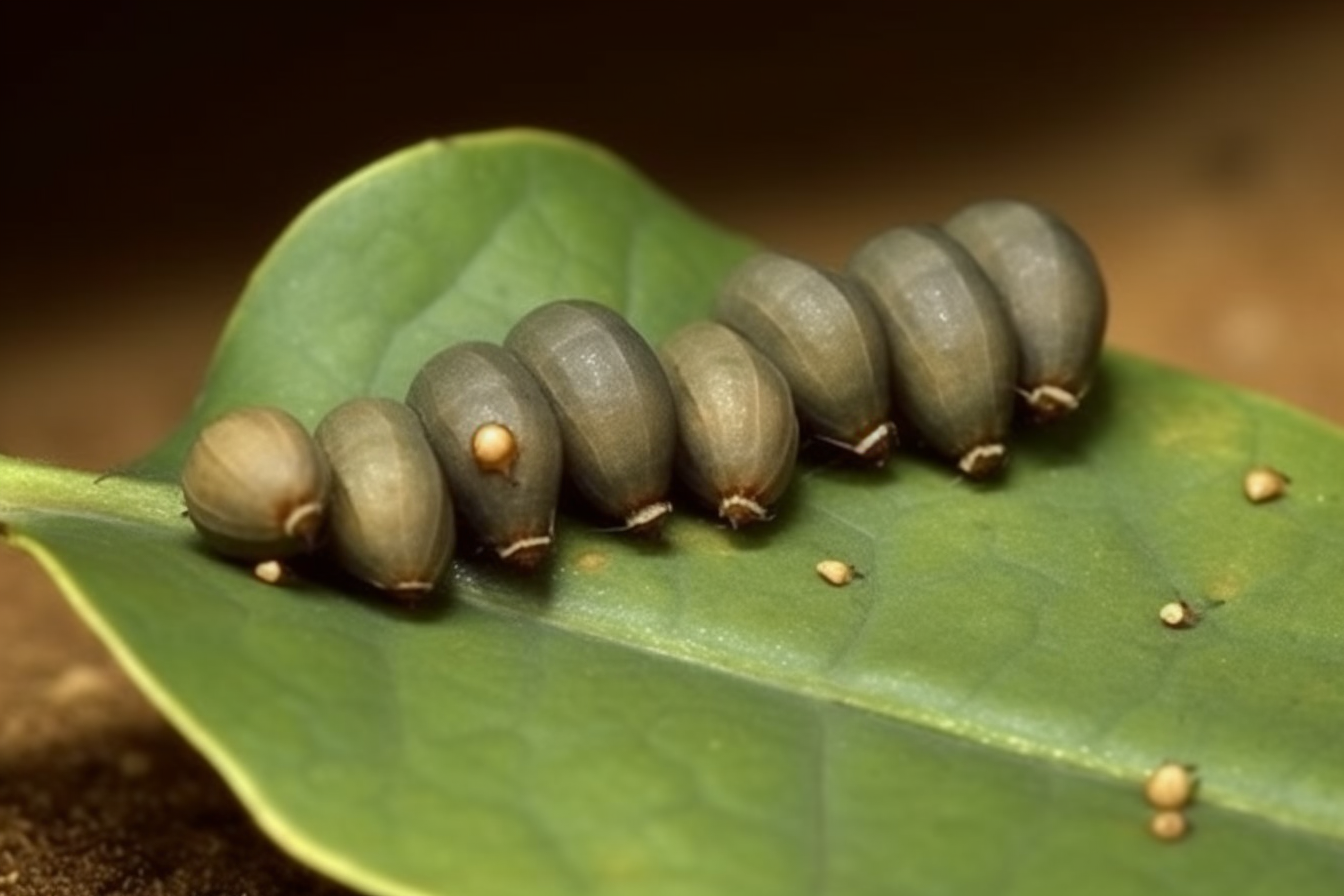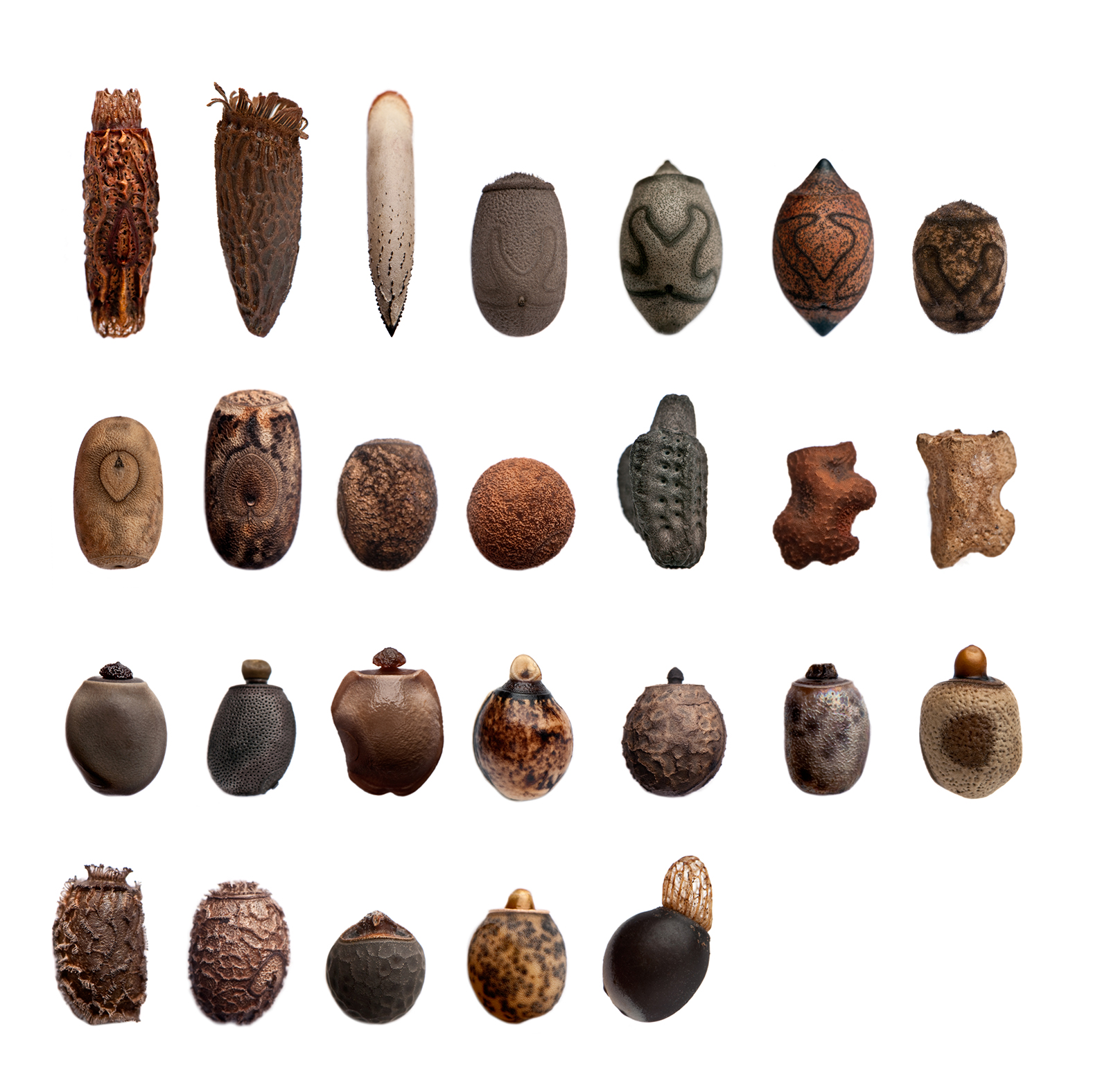
Stick insects have somewhat unusual reproductive habits, with much variation in how long it takes their eggs to hatch. In this article I’ll explore the factors that influence the incubation period of stick insect eggs and how it can vary across different species.
The average incubation time for stick insect eggs generally ranges from three to five months. However, this time frame can vary greatly depending on factors such as species, temperature, and humidity. Some stick insect eggs have a shorter incubation time of around five weeks, while others can take up to eighteen months before hatching.
Let’s delve a little deeper into the factors that influence the hatching time of stick insect eggs and discuss ways you can create an ideal environment for them to thrive.
Stick Insect Egg Hatching Timeline
The incubation time for stick insect eggs varies depending on the species. On average, it takes around three to five months for these eggs to hatch; however, specific timings can range from five weeks to as long as eighteen months (Keeping Bugs).
Interestingly, the temperature and humidity in their environment can highly influence the hatching time for stick insect eggs. Therefore it is crucial for insect breeders to maintain optimal conditions to support the successful hatching of these eggs.
Some species of stick insects are also known to be parthenogenic, which means that they can reproduce without males through a process called parthenogenesis. In these cases, the hatching timeline remains similar to that of species that require both males and females for reproduction (Just Exotic Pets).
Factors Affecting Hatching Duration
Several factors can influence the incubation period of stick insect eggs, including temperature, humidity, and species variations. Understanding these factors can help us better care for the eggs and increase their chances of successfully hatching.
Temperature
Temperature plays a significant role in determining the incubation period of stick insect eggs. I have noticed that warmer temperatures tend to speed up the hatching process, whereas colder conditions can slow it down. For most stick insect species, maintaining a temperature between 20 and 28 degrees Celsius is recommended. However, the precise temperature range may vary depending on the species. It’s essential to research the specific requirements of the stick insects you’re caring for and adjust the temperature accordingly.
Humidity
Just as temperature affects the hatching period, so too does humidity. Maintaining the appropriate humidity level is crucial for many stick insect species. Both too low and too high humidity levels can negatively impact the eggs and cause complications during hatching. Generally, a humidity level between 50 and 80 percent is advised, but this can also differ based on the species. You might find that regularly misting the eggs with a spray bottle helps maintain the correct humidity level; however, be careful not to over-mist as this may lead to too high humidity or mold growth.
Species Variations
Lastly, I must stress that the incubation time for stick insect eggs varies significantly across species. Some species, like the Indian stick insect, may take only around five weeks to hatch, whereas others, such as the Spiny leaf stick insect, can take up to 18 months (Keeping Bugs). Because of this variation, it’s essential to research the specific hatching duration of the stick insects you’re working with and adjust your egg care accordingly.
To properly care for stick insect eggs and optimize their chances of hatching, understanding and managing the factors influencing the incubation period is essential. By doing so, we can help ensure a successful outcome and ultimately observe the amazing life cycle of these fascinating insects.

Signs of a Healthy Stick Insect Egg
It’s important for all stick insect breeders to be able to distinguish between healthy and unhealthy eggs. In this section I’ll cover the key indicators of a healthy stick insect egg.
Firstly, the surface appearance of the egg is a good indicator of its health status. A healthy egg should have a smooth and firm shell. It should also have a relatively uniform color, depending on the particular species of stick insect. Slight variations in color and texture are normal, but excessively rough, uneven, or discolored shells may indicate a problem.
The size and shape of the egg are also important factors. Healthy eggs are generally consistent in size and shape within a specific stick insect species. The eggs of different species can vary greatly in size and appearance, which is why it’s essential to know the specific species you are dealing with. If you come across an egg that is noticeably smaller or larger than the others, or has an irregular shape, this may also be a sign of a problem.
Maintaining proper temperature and humidity levels is crucial for the development of stick insect eggs. Eggs should be kept in a controlled environment with temperatures ranging from 20°C to 30°C (68°F to 86°F) and humidity levels between 50% and 90%, depending on the species. If the conditions are right, the eggs should remain in good shape throughout the incubation period, which can last anywhere from three to 18 months.
Regular observation is essential in keeping an eye on the overall health and development of the eggs. It is not uncommon for eggs to darken slightly or show minor changes in texture as they approach the hatching stage. However, any significant changes in appearance or hatchlings that don’t look healthy may indicate a problem and require further attention.
Caring for Stick Insect Eggs
If you’ve bred insects before, you’ll know how important it is to ensure our little friends’ eggs are well taken care of to ensure a healthy hatching process. Here are some tips on housing and maintaining proper environmental conditions for stick insect eggs.
Housing
The ideal housing for stick insect eggs is a small container with a lid, such as a plastic container or a small glass jar. It is essential to make sure the container is well-ventilated. For this, I usually make small holes in the lid to allow proper air circulation.
I like to fill the bottom of the container with a layer of vermiculite or coconut fiber substrate, as these materials help with moisture retention. It is important to lightly mist the substrate with water to maintain humidity but avoid making it too wet, as this can cause mold or fungus growth.
Maintaining Proper Environment Conditions
Another crucial aspect in ensuring the success of stick insect egg hatching is maintaining the correct temperature and humidity. According to Keeping Bugs (these folks know their stuff!) the incubation time for stick insect eggs can range from 4 to 6 months or even longer for some species.
In general its best to maintain a temperature between 70°F (21°C) and 80°F (27°C) for most species, though it is essential to research the specific needs of the stick insect type you’re caring for. Use a small heater or place the container in a warm area as needed. As for humidity, keep it somewhere between 60% and 80% by regularly misting the substrate and monitoring it with a hygrometer.
By following these guidelines, I hope you too can have success in caring for stick insect eggs, leading to healthy hatchlings. Every species has its unique requirements, so always make sure to research and provide the appropriate care for your stick insect eggs.
Common Hatching Problems and Solutions
You may experience some common problems while waiting for your stick insect eggs to hatch. Here are some solutions to help you overcome them.
The first is that your eggs do not hatch within the expected time frame. This could be due to improper temperature and humidity levels, as these are crucial factors for the incubation process. To solve this I suggest regularly monitoring the temperature and humidity of the environment where you’re keeping the eggs. If needed, adjust the conditions to meet the specific requirements of your stick insect species. For instance, consider using a heat mat or increasing the moisture level in the enclosure. Keep in mind that some stick insect species may take up to 18 months to hatch, so patience is key. You can’t rush this!
Another common problem is mold growth on the eggs. This can occur if the eggs are kept in an environment that is too moist. To prevent mold growth, I recommend placing a layer of substrate, such as vermiculite or coir, at the bottom of the container to help control moisture levels. If mold is already present, gently clean the eggs with a soft brush or cotton swab, and adjust the humidity as needed.
Additionally, infertile eggs are a possibility, especially if you’re dealing with parthenogenetic stick insect species. In this case, there’s not much you can do other than discarding the infertile eggs and getting additional eggs from a more reliable source.
In some cases the nymphs may struggle to emerge from their eggs. This might be due to a lack of moisture or a weakened nymph. You can help by gently misting the eggs with water and, in extreme cases, consider using a pair of fine tweezers to carefully assist the nymph in breaking out of the eggshell, being extra cautious not to harm it.
Conclusion
The incubation period for stick insect eggs can vary significantly among species. I learned that on average these eggs hatch within three to five months, but some may take as short as five weeks or as long as eighteen months to hatch. It is important to consider the specific species when anticipating the hatching time of stick insect eggs.
Hatching and survival rates for stick insects tend to be higher in captivity, provided they receive proper care. This means maintaining the correct humidity, temperature, and environment for the eggs to successfully hatch and the nymphs to thrive.
It is essential to understand that stick insect eggs’ hatching duration greatly depends on the species, and proper care must be provided to ensure successful hatching and survival. By considering these factors, I hope that those raising stick insects can have a better understanding of the incubation time and overall care required for these fascinating creatures.
Driven by a passion for those tiny creatures that rule our world, we at Bug Domain strive to be your go-to resource for information on insects.



